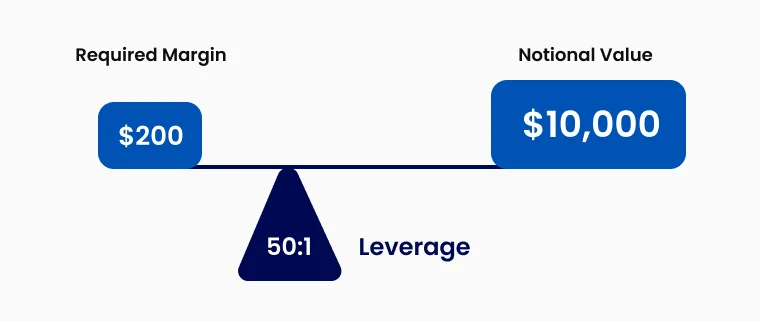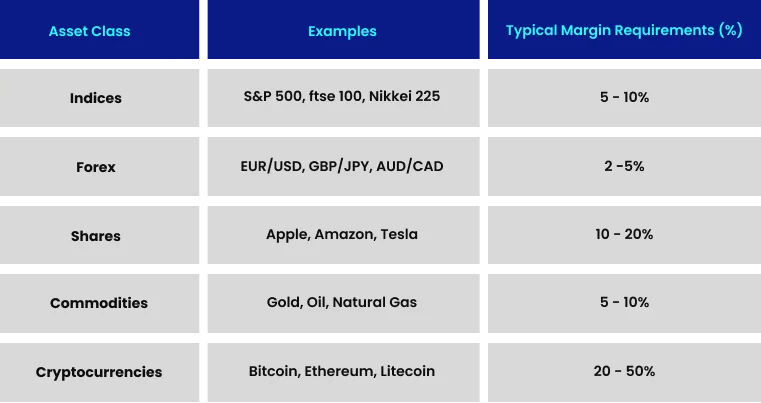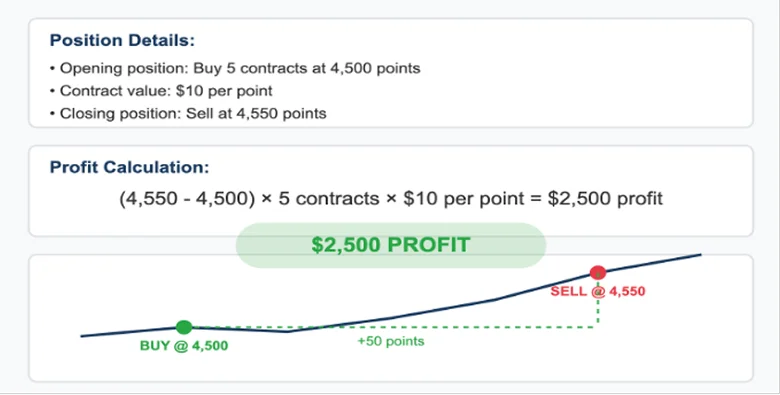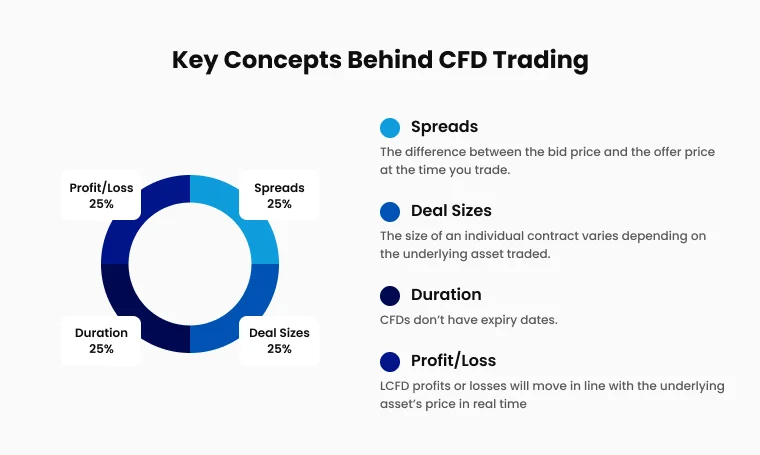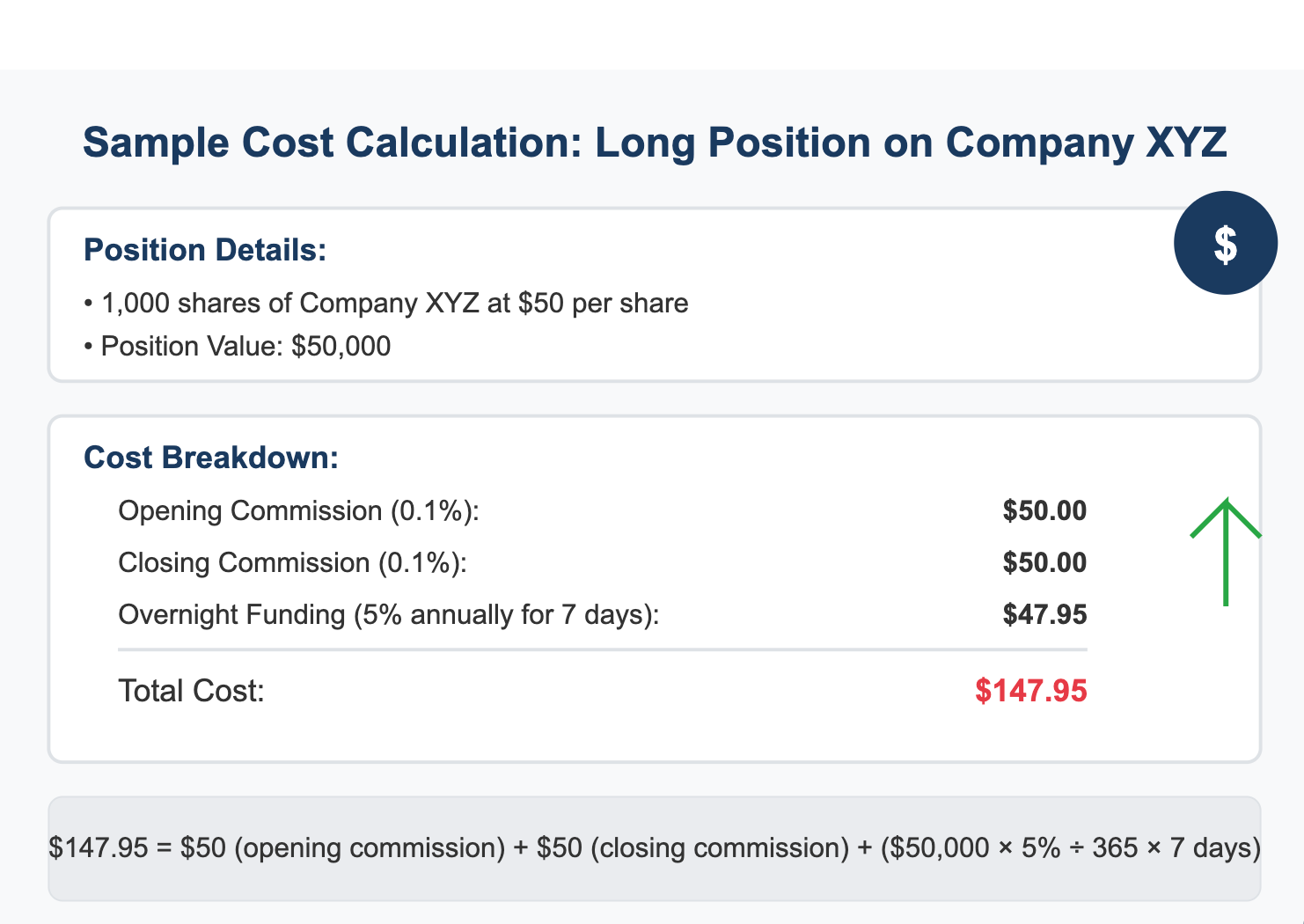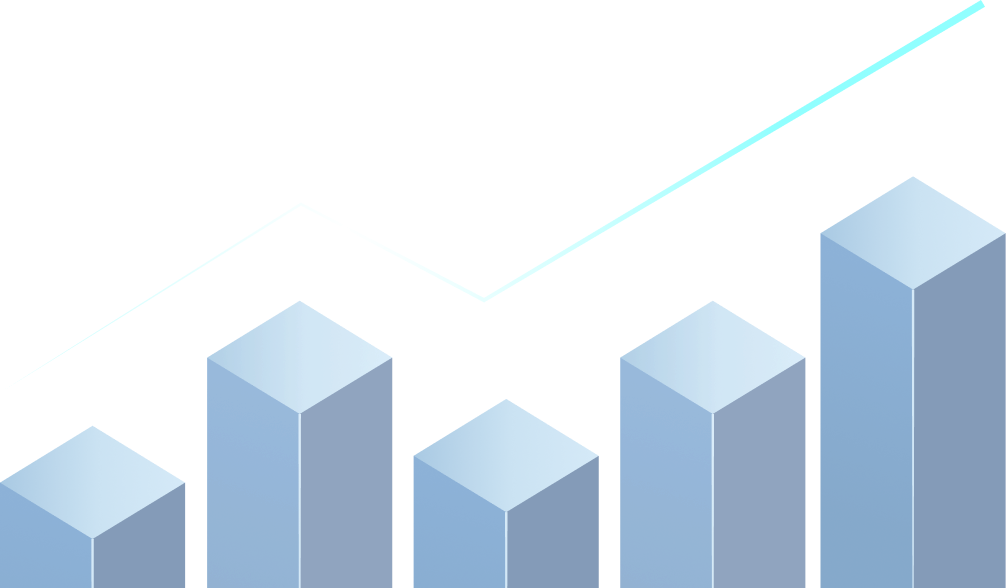
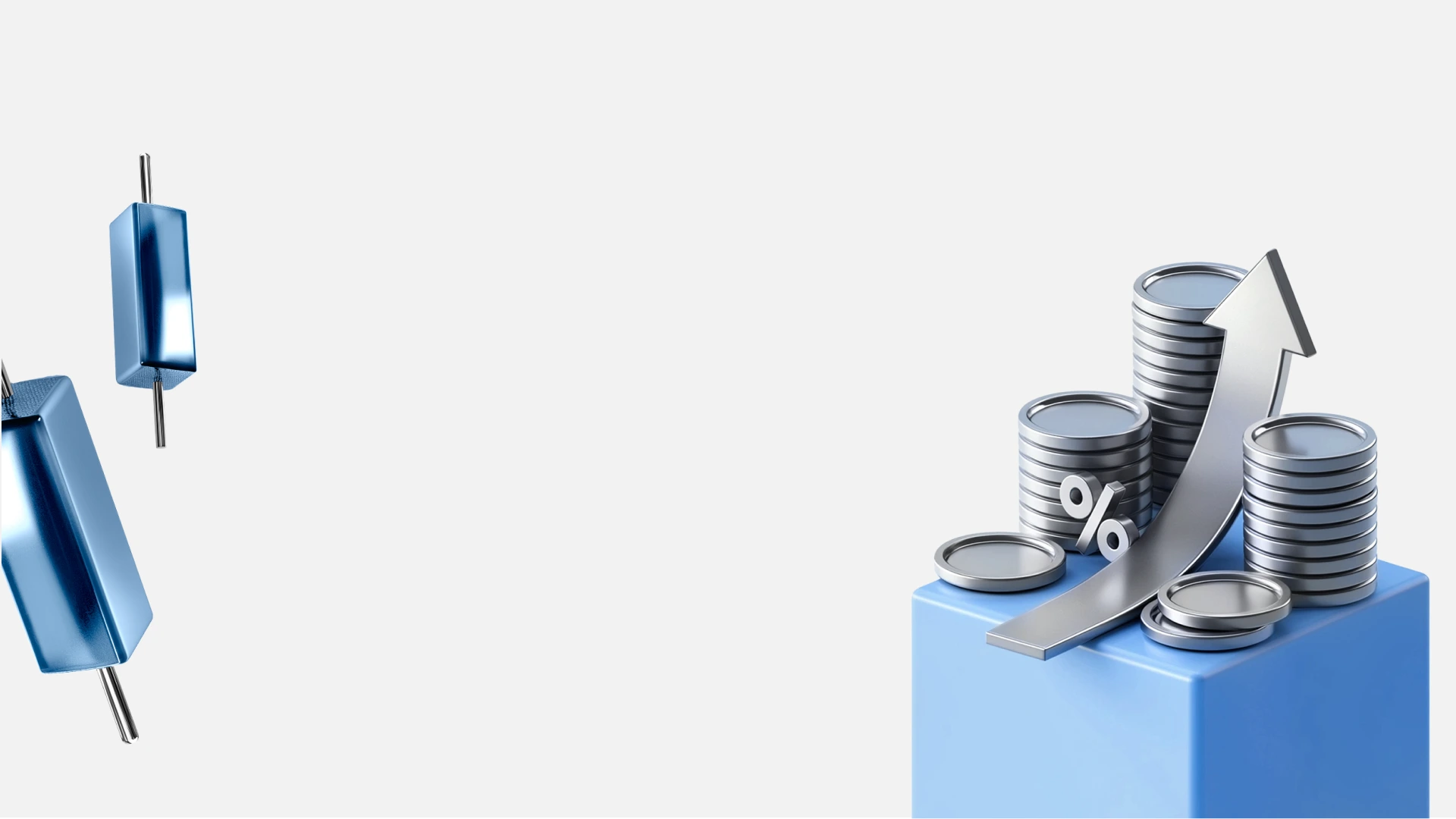
What is CFD Trading & How Does It Work
Contract for Difference (CFD) trading is a sophisticated financial instrument that allows traders to speculate on the price movements of underlying assets without owning them. With CFDs, you can capitalize on rising and falling markets, accessing a diverse range of financial markets through a single trading platform. CFDs are derivative products that mirror the performance of various asset classes, including: - Shares and equities - Stock indices - Forex (currency pairs) - Commodities (oil, gold, agricultural products) - Cryptocurrencies (Bitcoin, Ethereum, etc.) - Bonds and treasuries - ETFs (Exchange-Traded Funds) When trading CFDs, you agree with a broker to exchange the difference in an asset's value from when you open a position to when you close it. This arrangement offers significant flexibility and unique advantages compared to traditional trading methods.
Key Takeaways
CFDs let you speculate on price movements without owning the underlying asset, with opportunities in both rising and falling markets.
Leverage allows control of larger positions with a small margin deposit, amplifying both potential gains and losses.
Trading costs include the spread or commission and, for rolling (cash) CFDs, overnight financing; futures CFDs typically embed more costs in the spread and avoid daily funding.
A single platform can provide access to shares, indices, forex, commodities, crypto, bonds, and ETFs, enabling broad market diversification.
Sound risk management is essential—use position sizing, stop loss and take profit orders, and monitor leveraged positions closely.
Key Features of CFD Trading
Leverage and Margin Trading
One of the most powerful aspects of CFD trading is leverage. This allows you to gain exposure to markets with just a fraction of the capital normally required:
Enhanced Market Exposure: Control larger positions with a relatively small deposit (margin)
Capital Efficiency: Free up capital for diversification across multiple markets
Amplified Potential: Both profits and losses are calculated on the full position value
For example, with a 5% margin requirement on the S&P 500 index, a $1,000 deposit could expose you to a $20,000 position. However, this amplification works both ways—magnifying potential profits and losses.
Going Long or Short
Unlike traditional investing, where you primarily profit from rising markets, CFDs offer the flexibility to profit in both bullish and bearish conditions:
Long Positions (Buy): Profit from rising markets by opening a buy position
Short Positions (Sell): Profit from falling markets by opening a sell position
This bidirectional trading capability is particularly valuable during market downturns or economic uncertainty, where traditional buy-and hold strategies may struggle.
Diverse Market Access
CFD trading provides access to thousands of financial markets through a single platform:
With over 18,000 markets available, traders can diversify their portfolios and capitalize on opportunities across different sectors and regions.
How CFD Trading Works: A Practical Breakdown
Position Sizing and Contract Values
CFD positions are measured in contracts or lots, with each market having its specific contract value:
Shares CFDs: Typically, one contract equals one share
Index CFDs: Contract values usually expressed as a currency amount per index point (e.g., $10 per point)
Forex CFDs: Standardized lot sizes (standard lot = 100,000 units of base currency)
Understanding the contract value is essential for calculating potential profits, losses, and position sizing based on your risk tolerance.
The Mechanics of Profit and Loss
CFD profit and loss calculations follow a straightforward formula:
For long positions (buy): Profit/Loss = (Closing Price - Opening Price) × Number of Contracts × Contract Value
For short positions (sell): Profit/Loss = (Opening Price - Closing Price) × Number of Contracts × Contract Value
Example: Long Position on S&P 500 Index
Opening position: Buy 5 contracts at 4,500 (contract value: $10 per point)
Closing position: Sell at 4,550
Calculation: (4,550 - 4,500) × 5 × $10 = $2,500 profit
Example: Short Position on S&P 500 Index
Opening position: Sell 5 contracts at 4,500 (contract value: $10 per point)
Closing position: Buy at 4,450
Calculation: (4,500 - 4,450) × 5 × $10 = $2,500 profit
It's important to note that these examples exclude costs and charges such as overnight funding, spreads, or commissions.
Understanding the Spread
The spread is the difference between the buy (ask) and sell (bid) prices. This is a key cost component in CFD trading:
For most markets (indices, forex, commodities), the cost of trading is built into the spread
For share CFDs, many providers charge a commission instead of widening the spread
Tight spreads are generally preferable as they reduce the market movement required to break even on a trade.
Margin and Leverage Calculations
To calculate the margin required for a position:
Margin Requirement = Position Size × Margin Percentage
For example, to open a position worth $10,000 on the market with a 10% margin requirement: $10,000 × 10% = $1,000 initial margin required.
Effective leverage is calculated as: Effective Leverage = Position Size ÷ Margin Requirement.
In the example above, the effective leverage would be 10:1 ($10,000 ÷ $1,000).
Advanced CFD Trading Concepts
Hedging with CFDs
CFDs can be used to protect existing investments against adverse market movements:
Portfolio Protection: If you hold a traditional share portfolio valued at $50,000, you could open a short CFD position of equivalent value. If the market falls, the profit on your CFD position can offset losses in your share portfolio.
Sector Hedging: Protect against sector-specific risks by taking opposing positions in related markets.
Currency Risk Management: Hedge against currency exposure in international investments.
This hedging capability makes CFDs valuable tools for risk management, especially during volatile market conditions.
Rolling Contracts vs. Futures CFDs
CFD providers generally offer two types of contracts: Cash (Rolling) CFDs and Futures CFDs, each with distinct characteristics suited to different trading strategies.
Cash or Rolling CFDs
Rolling CFDs do not have a fixed expiry date, allowing traders to hold positions indefinitely. However, they are subject to overnight funding charges, which can accumulate over time. This makes them ideal for short to medium-term trading, where traders seek to capitalize on price movements without concerns about contract expiration.
Futures CFDs
Futures CFDs come with a fixed expiry date, meaning they automatically close at a predetermined time. Unlike rolling CFDs, no overnight funding charges apply, as all costs are already built into the spread. This structure makes futures CFDs more suitable for medium to long-term positions, where traders aim to avoid daily financing costs.
Choosing between rolling and futures CFDs depends on your trading timeframe and strategy. Short-term traders may prefer rolling CFDs for flexibility, while those holding longer-term positions may benefit from the cost structure of futures CFDs.
Order Types and Risk Management
Successful CFD trading relies on effective order execution and risk management tools:
Market Orders: Execute immediately at the current market price
Limit Orders: Set a specific price for entry
Stop Orders: Automatically open positions when markets reach specified prices
Stop-Loss Orders: Close positions to limit losses
Guaranteed Stops: Ensure execution at exact price levels (usually for an additional premium)
Trailing Stops: Dynamic stop-loss orders that move with favorable market movements
A comprehensive risk management strategy incorporating these tools is essential for sustainable trading.
Is CFD Trading Right for You?
Advantages of CFD Trading
Market Versatility: Trade multiple asset classes from a single platform
Leverage Benefits: Control larger positions with smaller capital outlay
Shorting Capability: Profit from falling markets without borrowing securities
No Stamp Duty: In some jurisdictions, CFDs are exempt from stamp duty that applies to share purchases
Extended Market Hours: Access to out-of-hours trading on major indices
Hedging Potential: Protect existing investments against market downturns
Risks and Considerations
Magnified Losses: Leverage can amplify losses, potentially exceeding your initial deposit
Overnight Funding Costs: Long-term positions incur daily financing charges
Market Volatility: Rapid price movements can trigger stop-loss orders or margin calls
Counterparty Risk: Reliance on the CFD provider's financial stability
Complexity: Requires understanding of multiple financial concepts and markets
CFD trading is best suited for:
Individuals who have a strong grasp of financial markets and can dedicate time to analyzing price movements and monitoring their positions. Successful traders in this space typically possess disciplined risk management strategies to mitigate potential losses and optimize their returns. Since CFDs involve leverage, traders must have sufficient financial resources to withstand market fluctuations without being forced to exit positions prematurely.
Additionally, a solid understanding of leverage and its effects on gains and losses is essential for managing risk effectively. Those comfortable with these aspects and who can maintain a structured trading approach may find CFD trading a viable option for market participation.
5 Steps to Becoming a Successful CFD Trader
1. Build a Strong Knowledge Foundation
Before executing your first trade, take the time to develop a solid understanding of key trading concepts. This includes learning about CFD mechanics and pricing, technical and fundamental analysis, risk management principles, and trading psychology. Many reputable brokers offer educational resources such as webinars, tutorials, articles, and demo accounts, which can help traders gain essential knowledge before entering the market.
2. Develop a Comprehensive Trading Plan
A structured trading plan is crucial for maintaining discipline and consistency. Your plan should outline clear entry and exit criteria, position sizing rules, and risk parameters, including maximum allowable losses per trade, day, or month.
Additionally, define the markets and timeframes you will trade, establish a trading schedule, and include a review process to track performance. Documenting and adhering to your plan—especially during emotionally challenging market conditions—helps ensure long-term trading success.
3. Practice on a Demo Account
Using a demo account allows traders to gain practical experience in a risk-free environment. It helps familiarize oneself with the trading platform, test various strategies and approaches, and practice position sizing and risk management techniques.
Demo trading builds confidence and helps refine skills before transitioning to live trading with real capital.
Most established brokers offer demo accounts with virtual funds and real-time market data.
4. Start Small and Scale Gradually
When transitioning to live trading:
Begin with minimal position sizes
Use conservative leverage levels
Focus on one or two markets initially
Increase position sizes only after demonstrating consistent results
This measured approach allows you to adapt to the psychological differences between demo and live trading.
5. Continuously Review and Improve
Sustainable success requires ongoing assessment and refinement:
Keep a detailed trading journal
Regularly analyze your performance metrics
Identify patterns in winning and losing trades
Adjust your strategy based on changing market conditions
Stay updated with market news and developments
Understanding CFD Costs and Fees
Understanding trading costs is essential for effective risk management. The primary cost components include spreads, commissions, overnight funding, and guaranteed stop premiums.
Spreads
The spread is the difference between an asset's buy (ask) and sell (bid) price and is often the main cost when trading indices, forex, and commodity CFDs. Spreads are variable and can fluctuate based on market conditions and volatility, widening during major economic events or low-liquidity periods.
Commissions
For share CFDs, brokers typically charge a commission instead of a spread. This fee is usually calculated as a percentage of the trade value and may include a minimum charge, ensuring that smaller trades still meet the broker’s cost requirements.
Overnight Funding
If a position is held past the daily cut-off time, an overnight funding charge (swap rate) applies. This fee is based on interbank rates plus a broker markup. Traders holding long positions typically incur a charge, while short positions may receive a credit, depending on interest rate differentials between currencies or assets.
Guaranteed Stop Premiums
A guaranteed stop-loss order (GSLO) ensures that a trade closes at the specified price, regardless of market gaps. This protection comes with an additional cost, a stop premium, which is refunded if the stop-loss is not triggered.
By understanding these cost factors, traders can make informed decisions and manage overall trading expenses more efficiently.
Sample Cost Calculation
For a long position on 1,000 shares of Company XYZ at $50 per share with a 0.1% commission:
Position value: $50,000
Opening commission: $50 (0.1% of $50,000)
Closing commission: $50 (assuming the same price)
Overnight funding at 5% annually: Approximately $6.85 per day ($50,000 × 5% ÷ 365)
The total cost of holding the position for 7 days would be approximately $147.95 ($50 + $50 + $6.85 × 7).
Trading with TMGM
TMGM offers tight spreads starting from 0.0 pips on major currency pairs with competitive commission rates. Traders can access leverage up to 1:1000, benefiting from deep liquidity sourced from multiple tier-1 providers for efficient trade execution. The platform provides fast execution speeds, averaging under 30 milliseconds, minimizing slippage and improving trading efficiency.
TMGM supports MetaTrader 4 (MT4) and MetaTrader 5 (MT5), available on desktop, web, and mobile devices, catering to various trading preferences. The broker provides educational resources, including a Trading Academy, live webinars, daily market analysis, trading guides, and a real-time trading calendar to keep traders informed. Clients also receive multilingual support, dedicated account managers, and efficient withdrawal processing, ensuring a seamless trading experience.
Free CFD Trading Courses and Resources
Becoming a successful CFD trader takes skill, knowledge, and practice. TMGM offers everything you need to get there, with a wealth of free trading courses and webinars. It also offers a free demo account with US$100,000 in virtual funds to help build your confidence in a risk-free environment.
We also provide trading strategy insights, market analysis, and news articles for all experience levels—so whether you’re a complete newcomer or a seasoned trader, TMGM has something for you.
Trade Smarter Today




FAQs About CFD Trading
What does CFD mean?
How can I get started trading CFDs?
How do CFD providers make money?
How do I use CFDs for hedging?
What is the difference between CFDs and futures?

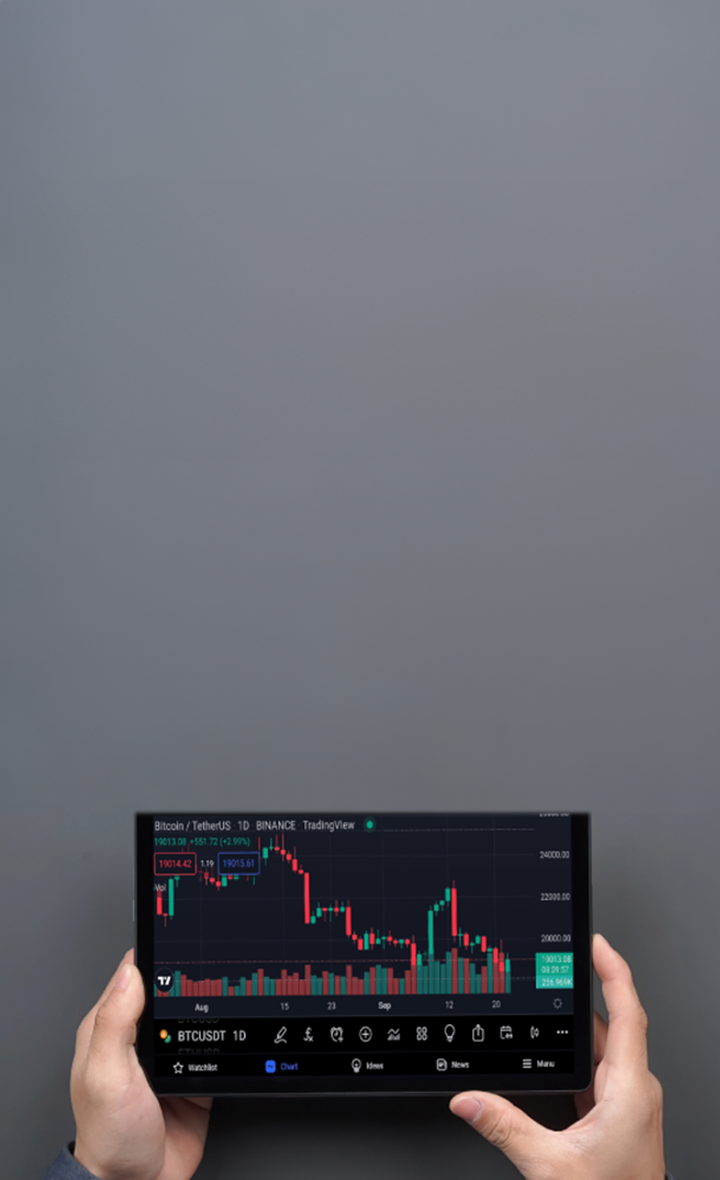
Account
Account
Instantly

